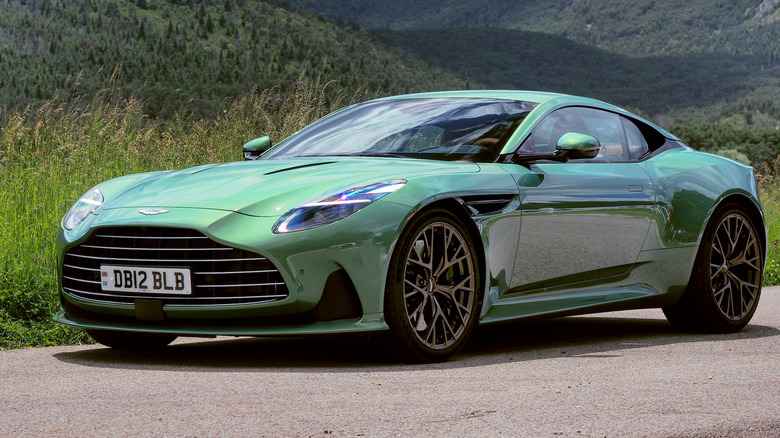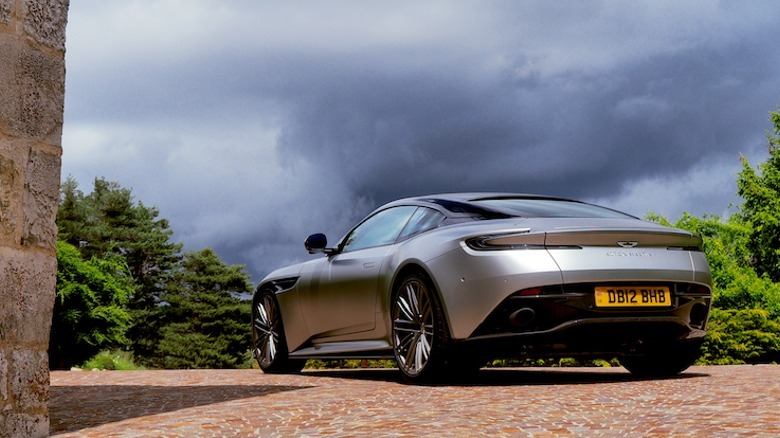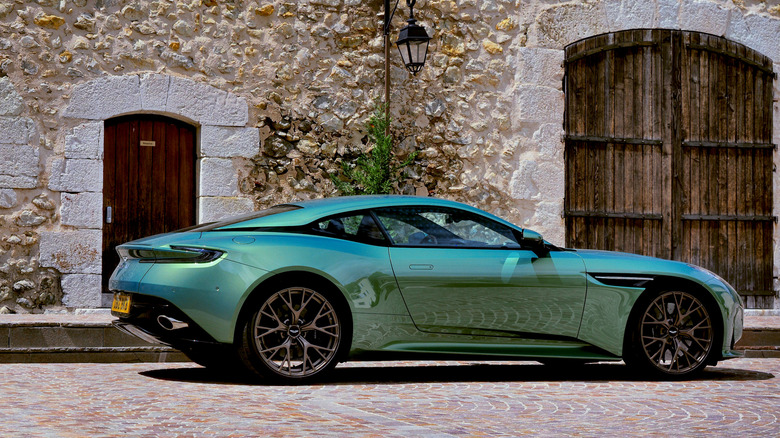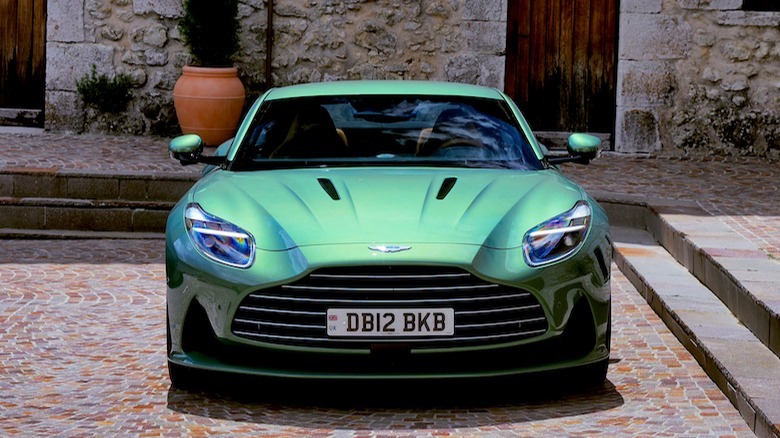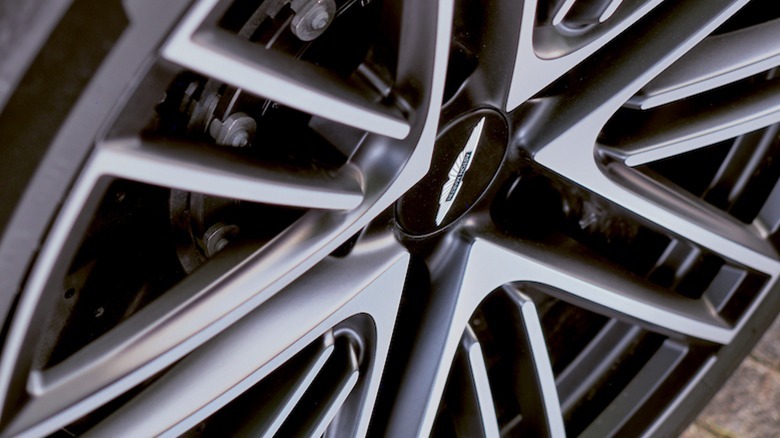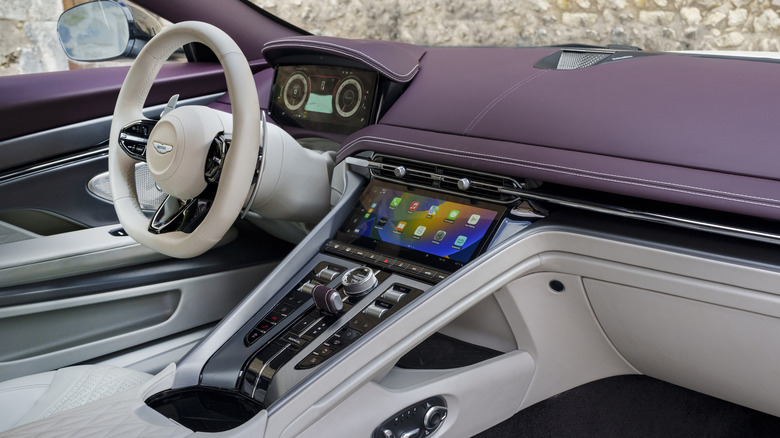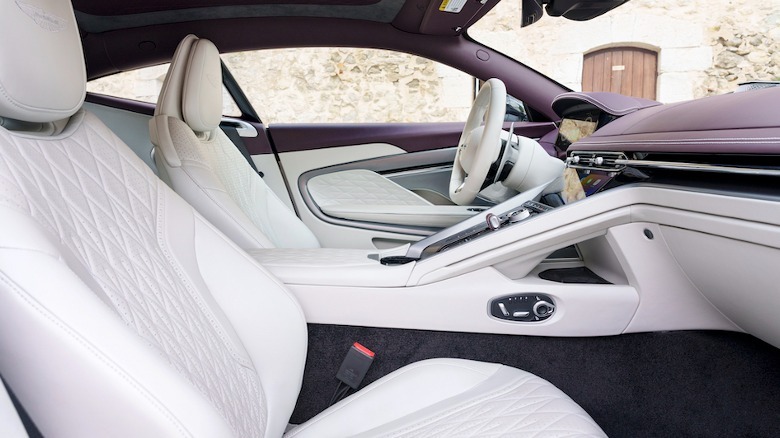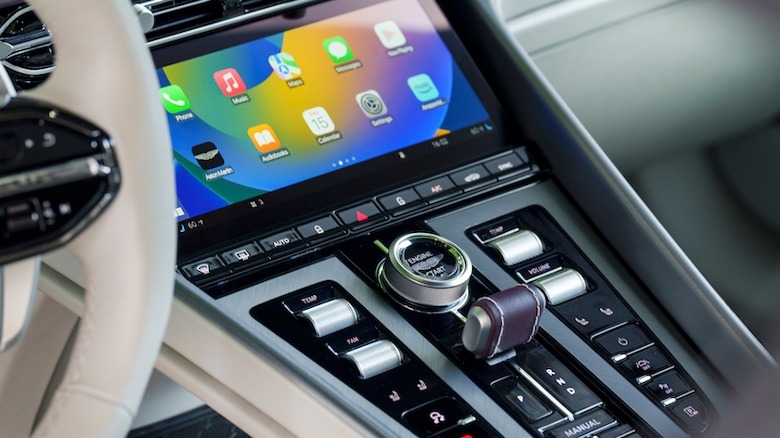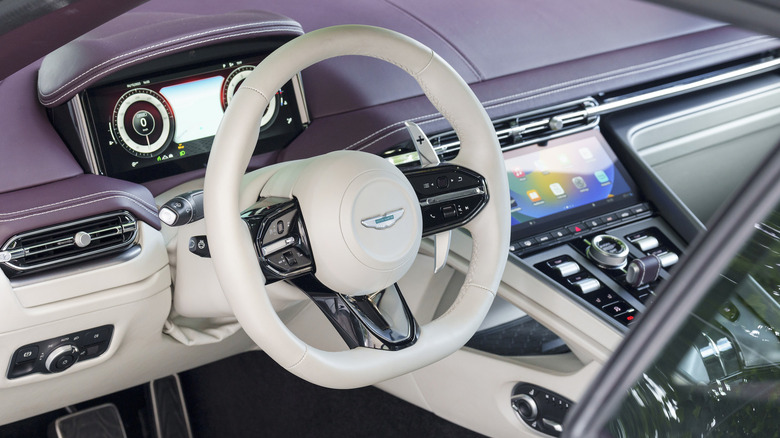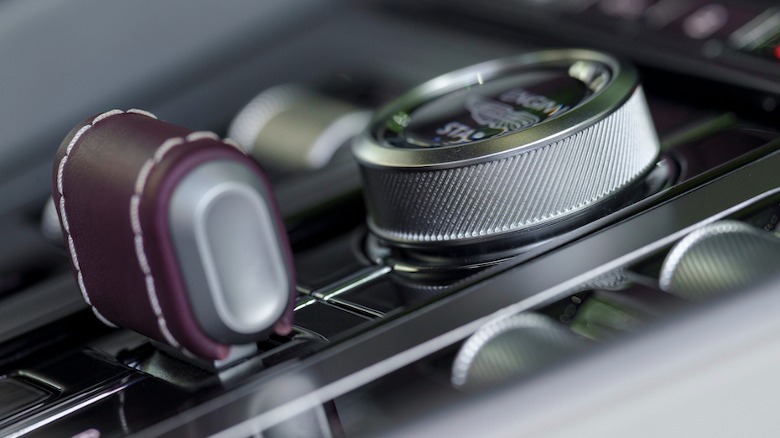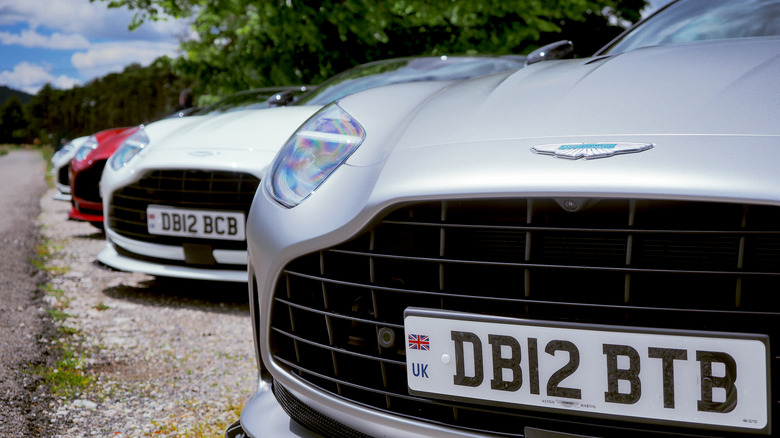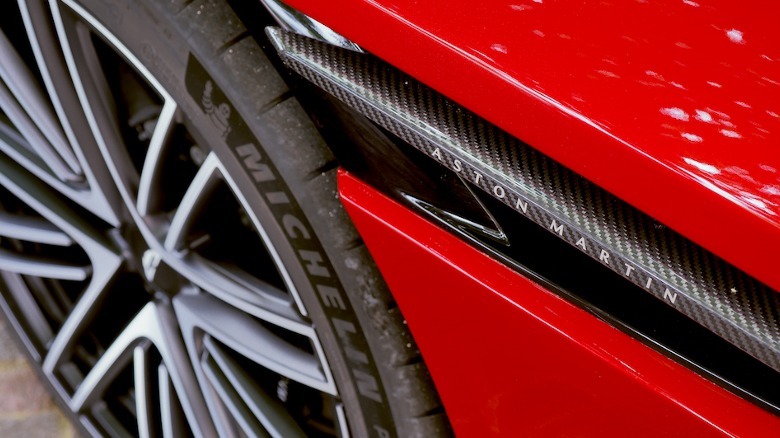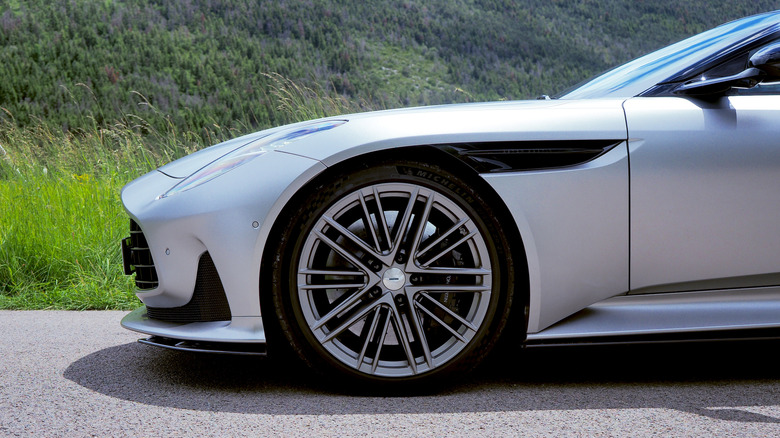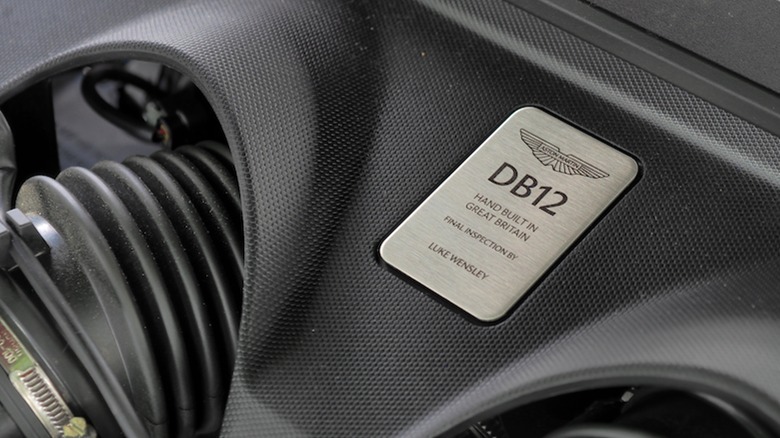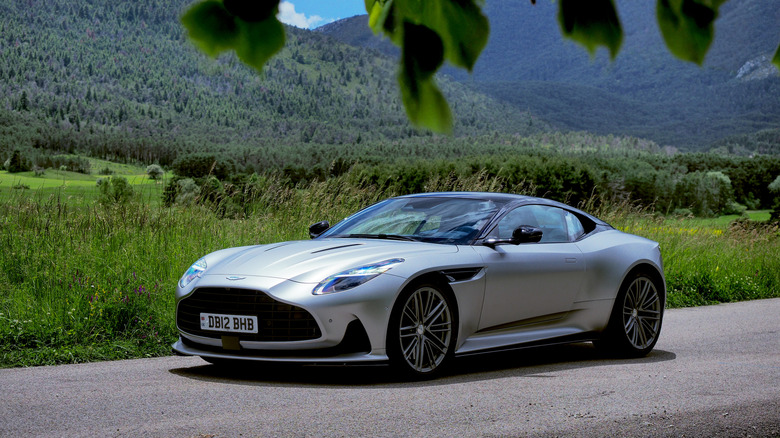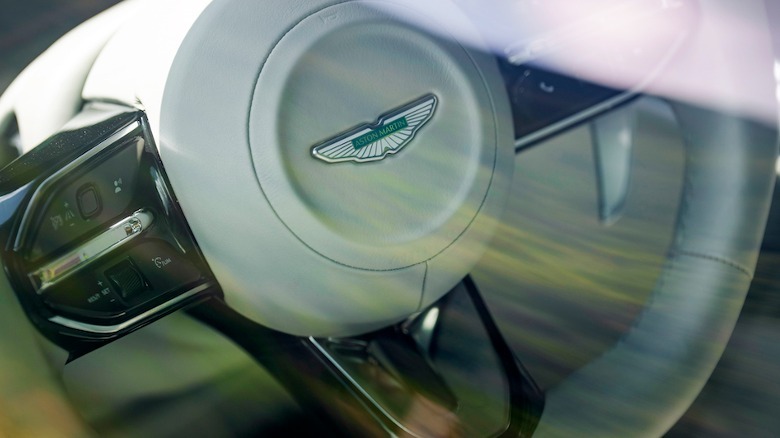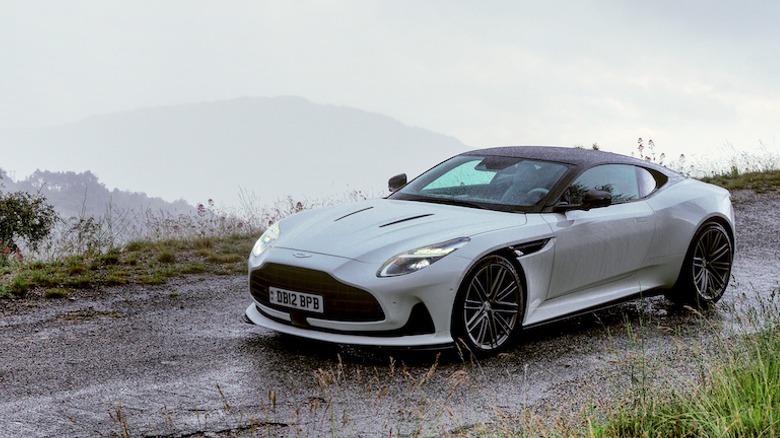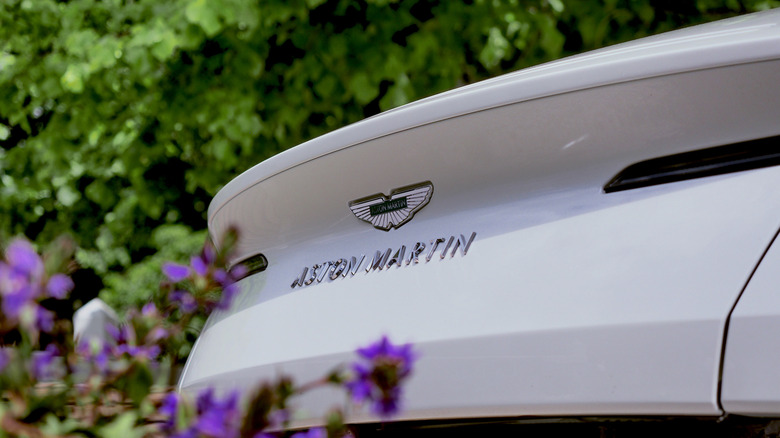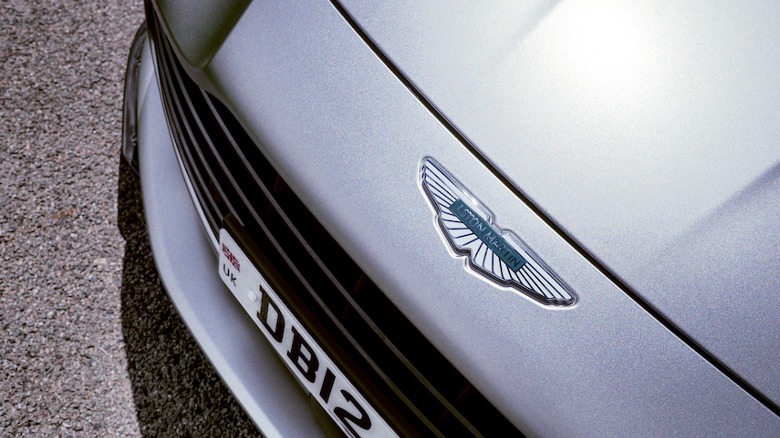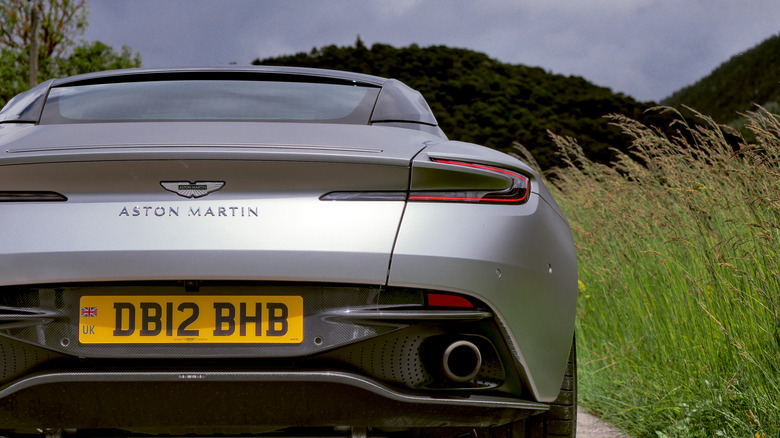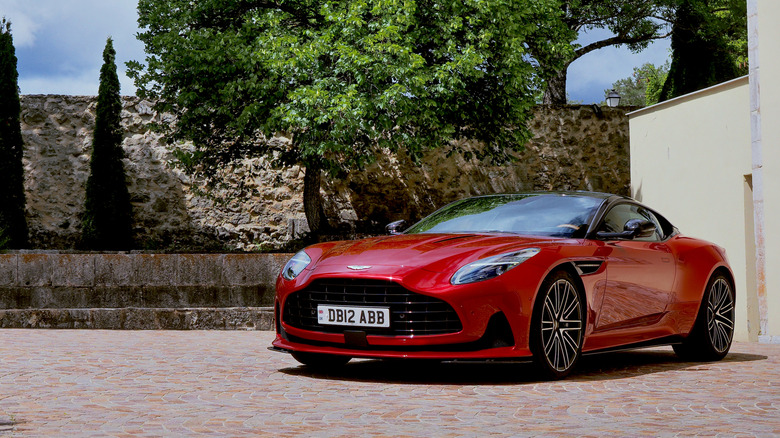2023 Aston Martin DB12 First Drive: Reputation Reboot
"Beguiling" might be the best word to describe the Aston Martin DB12. Failing that, "rebirth" seems to suit the coupe well. While the DB series may have more than seven decades under its belt, the DB12 arrives as the automaker reinvents itself in the alluring Venn middle-ground of design, ultra-luxury, and performance. In fact, Aston Martin says, the DB12 is so good it's not just a Grand Tourer, but a Super Tourer.
The auto industry loves its hyperbole, but the concept of a Super Tourer is, at least, grounded in something more meaningful than marketing. In short, it's about stretching a GT car at both extremes. "Preserving everything that is an Aston Martin Grand Tourer," Simon Newton, the automaker's head of vehicle engineering, explains, "but massively extending the depth of dynamic capability in the car."
The result is a quarter-million-dollar coupe that builds a case for being your only transportation. Wildly potent at the top end, a British-made alternative to Porsche's 911 Turbo, but also the luxury equal of Bentley's Continental GT. Surefooted when conditions might have you wishing for an SUV, but spry enough to keep pace should you stumble across a cliffside convoy of more focused sports cars. Cutting-edge technology, paired with heritage money can't buy.
The biggest surprise isn't Aston Martin's sky-high ambition, though, it's how close the DB12 comes to fulfilling it.
Timeless design
Aston Martin's design language may be evolutionary rather than revolutionary, but when you're starting with some of the prettiest cars around, that leaves the DB12 in fine fettle. All of the familiar cues are present and pleasingly correct: the oversized grille, proudly long hood, shapely haunches, and sinuously tapering roofline. It manages to look both classic and modern in a way that rival coupes could only dream of achieving.
In the metal, it looks more compact than it does in photos. In fact, the DB12 is actually slightly smaller than the DB11 — the reduced width, courtesy of new frameless side mirrors, is a welcome improvement for urban maneuverability — though some elements have been enlarged. The grille is bigger than on the outgoing car, for example, while the 21-inch wheels are in wider rear arches for an improvement in stance and proportions. New LED headlamps debut on the DB12, along with Aston Martin's new badge.
The details are considered, but it's how well they all come together which lingers. Modern sports cars — with their aerodynamically-minded shape and active bodywork — can sometimes feel like they end up intentionally divisive as a result. The DB12 just looks timeless.
A new digital heart
Much the same goes for the interior, where Aston Martin's usual blend of fine leather, metal, carbon fiber, and wood demonstrates that it definitely knows how to cosset. The DB12 is actually the first of the automaker's cars to show the results of a significant investment in interior design made around three years ago, with the color and trim teams doubled in size. The result is clean but not spartan — even if the rear seats are so snug as to be inhospitable even for kids — with plenty of physical controls remaining in the center console.
The biggest improvement is to the infotainment system. Aston Martin's team is blunt that the old, Mercedes-sourced tech was the loudest customer complaint, leaving a sour aftertaste in otherwise-sparkling products like the DBX 707. The result is an in-house design, now with a 10.25-inch touchscreen and a matching digital driver display, with an embedded eSIM and global modem for over-the-air update support across most of the DB12's systems.
Wireless Apple CarPlay and Android Auto are supported, though it seems a shame to cover up what is a legitimately huge advance in graphics. Aston Martin is still tweaking and finessing and might adjust font sizes and other minutiae, but the crisp and straightforward UI is leagues ahead of anything we've seen the automaker offer before. Meanwhile, what's promised to be massively over-specified processing behind the scenes boasts well for future updates.
Some touch, some toggle, all perfectly trimmed
There's no consensus, either among car-makers or owners, about the correct balance between digital and physical controls. Aston Martin's strategy with both is to bring commonly-accessed ones to the surface, whether that means a dedicated button or knob — such as to switch drive mode, active exhaust, or suspension settings — or minimizing how much menu-digging is involved through the touchscreen.
Personally, I'd be fine with a little more of the DB12 dashboard experience being digital, but it tallies well with what your fingers will find in a Bentley Continental GT or Porsche 911 Turbo. I like how Aston Martin has woven a little extra user-friendliness through its interface, too. The smart climate system's buttons for flagging to the car that you have cold hands or feet, for instance, feels a lot more like informing a helpful butler than adjusting the traditional HVAC controls.
The DB12 checks for available software updates whenever it's started, and the embedded modem also works with Aston Martin's new app. That shows details like car location, remaining range, service status, and buttons to remotely lock or unlock it. In all, the vastly improved digital experience is perhaps the most obvious area where the automaker has benefited from its recent investment rounds.
Speed comes as standard
Mercedes may be out of the dashboard, but its AMG influence is definitely still felt under the DB12's hood. The 4.0-liter V8 twin-turbo gas engine delivers 671 horsepower and 590 lb-ft of torque — nearly 30% more power than the DB11, and arriving faster too — with Aston Martin picking its own, larger turbos. The automaker independently tunes and programs the engine, too, while the ZF-sourced eight-speed transmission has a shorter final drive ratio for improved in-gear acceleration.
The result is zero to 60 mph in a claimed 3.5 seconds and a top speed of 202 mph. The DB12 isn't just fast in a straight line, either. It's not all-wheel drive like a Lamborghini might be, but the standard electronic rear limited-slip differential does a swift job of hurling power between the custom Michelin Pilot Sport 5S rubber on either side. It's the tires' first OEM application, and here they're paired with the first carbon ceramic brakes on a DB series car.
That's not the only slick engineering. Bilstein's DTX dampers — faster reacting, plus with a broader range of damping power — extend the difference between the Comfort drive mode at one extreme, and Sport at the other. There's a new Individual drive mode, which can be user-customized, and a Wet mode too.
A dedicated button shuts off the ESP, but even then the keen driver has options. Nine levels of traction control involvement are offered — adjusted by the steering wheel controls — to dial in just how much assistance the DB12 weighs in with. There, a new 6-axis sensor promises to spot upcoming issues faster, and thus correct them with a lighter, defter touch.
Distinctive where it matters
The risk of trying to be all things to all driving situations, and bringing along the tech required to deliver that, is that purity can be overshadowed by complexity. Then there's the paradox that, the closer you get to perfection, the less personality you can end up with. The DB12 needs to be good, but it also needs to feel like an Aston Martin in the process.
I needn't have worried. The DB12's engineers have been busy, undoubtedly, but out on the coiling roads of Southern France, where Aston Martin invited SlashGear to test its newest model, it's the power curve and the transmission where their efforts are most obvious. Hit the gas and there's a very short — but noticeable — pause, an anticipation-whetting mustering of horses and twist, before the sleek coupe hurtles you forward gleefully.
Aston Martin could've made its massaged gearbox shift with imperceivable syrup. Instead, it intentionally cranked up the aggression — "shift as an event," the car's engineering chief describes it — and the result is a clear, mechanical stab that punctuates aggressive driving. Yes, it's eminently possible to glance down and realize you're comfortably exceeding the speed limit without realizing, but even if I'd prefer a little more V8 and exhaust noise at times, the DB12 does an excellent job of reminding you that you're driving fast.
A car for all seasons
The DB12 isn't specifically intended for the track, but that's certainly the experience I'd like to see next. Public roads are — like with most grand tourers — unsuitable play-places for horsepower-heavy cars like these. Even if you could be confident of avoiding the unwanted attention of law enforcement, the risk to other drivers or pedestrians makes it effectively impossible to safely test the limits of Aston Martin's engineering.
What stands out, regardless, is that the DB12 can be achingly quick. It's nimble, too, even if the lavish interior hasn't exactly been built with lightweighting in mind. The trick traction control adjustment wasn't possible with Aston Martin's not-quite-final software (the automaker has several things to tweak on its to-do list, including potentially toning down a needlessly-grating turn signal sound) but plenty of communication from road to wheel leaves me with little doubt that its dynamic performance is as tractable as a keen driver might require.
The bigger surprise was how capable the new Wet mode was when the heavens opened and torrential rain left the road slick and visibility minimal. It's the sort of moment when being in a low-slung, high-power, rear-wheel drive coupe doesn't feel ideal, and yet the DB12 struck a compelling balance between still allowing for fun while also telegramming confidence. This is no mere horsepower limiter, and the even better news is that, by offering a dedicated setting for low traction conditions, Aston Martin's dry modes can be less restrictive.
Aston Martin has electrification in its sights
It's hard not to look at the DB12 — either from the outside or, if you're sufficiently lucky, from behind the wheel — and wonder where electrification will take the Grand, sorry, Super Tourer. After all, Aston Martin hasn't been shy (like the rest of the auto industry) about staking out its EV future.
That said, its history with electrification has been patchy so far. The Rapide E — an all-EV version of the four-door Rapide discontinued in 2020 — was canceled before it could launch. Plans to reboot the Lagonda brand for a range of high-end, electric-only vehicles also fizzled.
By 2026, though, all new Aston Martin model lines will feature an "electrified" powertrain option, following the arrival of the Valhalla plug-in hybrid supercar in 2024. A fully electric Aston Martin is on track for 2025, though it's unclear as yet what sort of vehicle it might be: sports car, GT, SUV, or something else. Come 2030, though, the automaker says that its entire core range will be fully electrified.
Something to look forward to, then
I think an EV heart would suit the DB12 just fine, quite frankly. The twin-turbo V8 can be syrupy when required, and the eight-speed automatic suitably slick for long-distance cruising, but there's nothing quite like a fully electric vehicle for Jekyll and Hyde-style duality. Wafting on a surfeit of torque at one moment, and then dropping the hammer on the prodigious acceleration that e-motors do so well at (yes, Rolls-Royce Spectre, I'm looking at you).
Aston Martin is, unsurprisingly, coy on that possibility when asked. At least for the moment, anyway. Its recently-announced deal with Lucid Motors for electric drivetrain components does seem promising: the technology that makes the Lucid Air a wildly rewarding luxury sedan, combined with Aston Martin's established talent at coaxing a distinct personality out of shared hardware. A DB12 doesn't feel like a Mercedes-AMG SL on the road, after all.
2023 Aston Martin DB12 Verdict
What the DB12 does feel like is the most refined, complete Aston Martin in years. What the automaker developed itself is cohesive and thoughtful; the customizations made to the parts it has brought in are deft and intentional. No, not everyone will necessarily agree with every decision along the way, but there's a confidence in the DB12 recipe that feels admirably unapologetic.
Money has helped, there: "At Aston, for once we've found ourselves well-resourced," engineering chief Simon Newton jokes, though there's plenty of truth to it, too. Yet the DB12 isn't just the result of a team suddenly flush with cash, cherry-picking toys they once couldn't afford.
It's more aggressive than you'd expect, but also more comfortable. Turns heads, but doesn't let style completely oust practicality in the process. And while there may be faster, or more lavish, or more outlandish alternatives out there, none quite replicate the combination of strengths the DB12 offers in one, single, super-appealing sports car.
